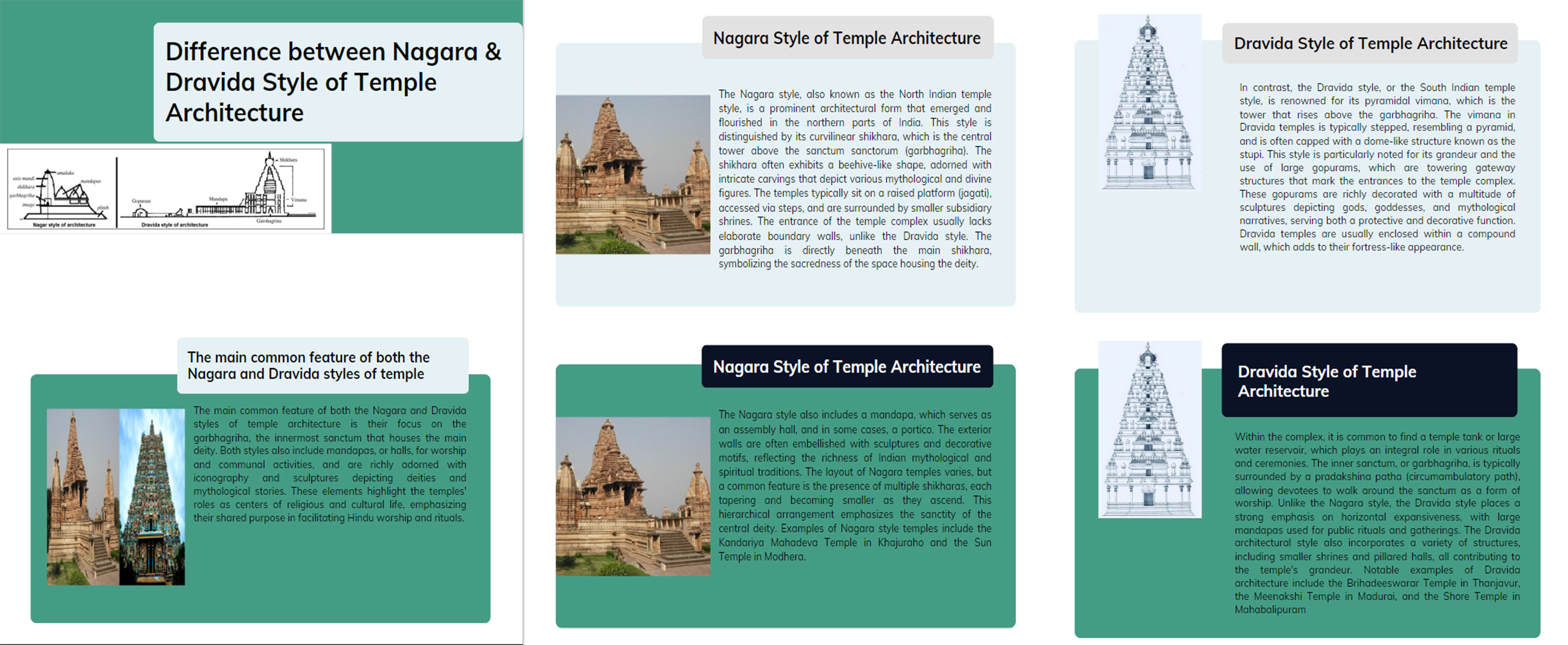Explain the engineering and aesthetic concepts that went into building Indian temples. Evaluate the importance of the iconography, sculptures, and inscriptions found in Indian temple construction.
Evolution of Nagara Temple Architecture The Nagara style, indigenous to North India, is characterized by its distinctive shikhara, a towering superstructure that culminates in an amalaka (disc-like stone) and a kalasha (pot-shaped finial). Let's trace its evolution:
Evolution of Nagara Temple Architecture
The Nagara style, indigenous to North India, is characterized by its distinctive shikhara, a towering superstructure that culminates in an amalaka (disc-like stone) and a kalasha (pot-shaped finial).
Let’s trace its evolution:





Indian temple architecture is an intricate blend of religious devotion, aesthetic beauty, and engineering ingenuity. Developed over millennia, it incorporates a variety of styles, such as Nagara, Dravida, and Vesara, which differ based on regional influences and historical periods. Aesthetic and engRead more
Indian temple architecture is an intricate blend of religious devotion, aesthetic beauty, and engineering ingenuity. Developed over millennia, it incorporates a variety of styles, such as Nagara, Dravida, and Vesara, which differ based on regional influences and historical periods.
Aesthetic and engineering principles underlying the construction of Indian temples
Aesthetic Principles:
Engineering Principles in Indian Temple Construction:
Significance of Inscriptions, Sculptures, and Iconography Inscriptions:
Sculptures:
Iconography:
Indian temple architecture is a symphony of aesthetics, engineering, and cultural storytelling. It serves multiple roles from being a spiritual sanctuary to a historical document, all while being a testimony to the architectural prowess and artistic vision of its creators. It’s a comprehensive discipline that encapsulates the very essence of India’s rich cultural heritage.
See less